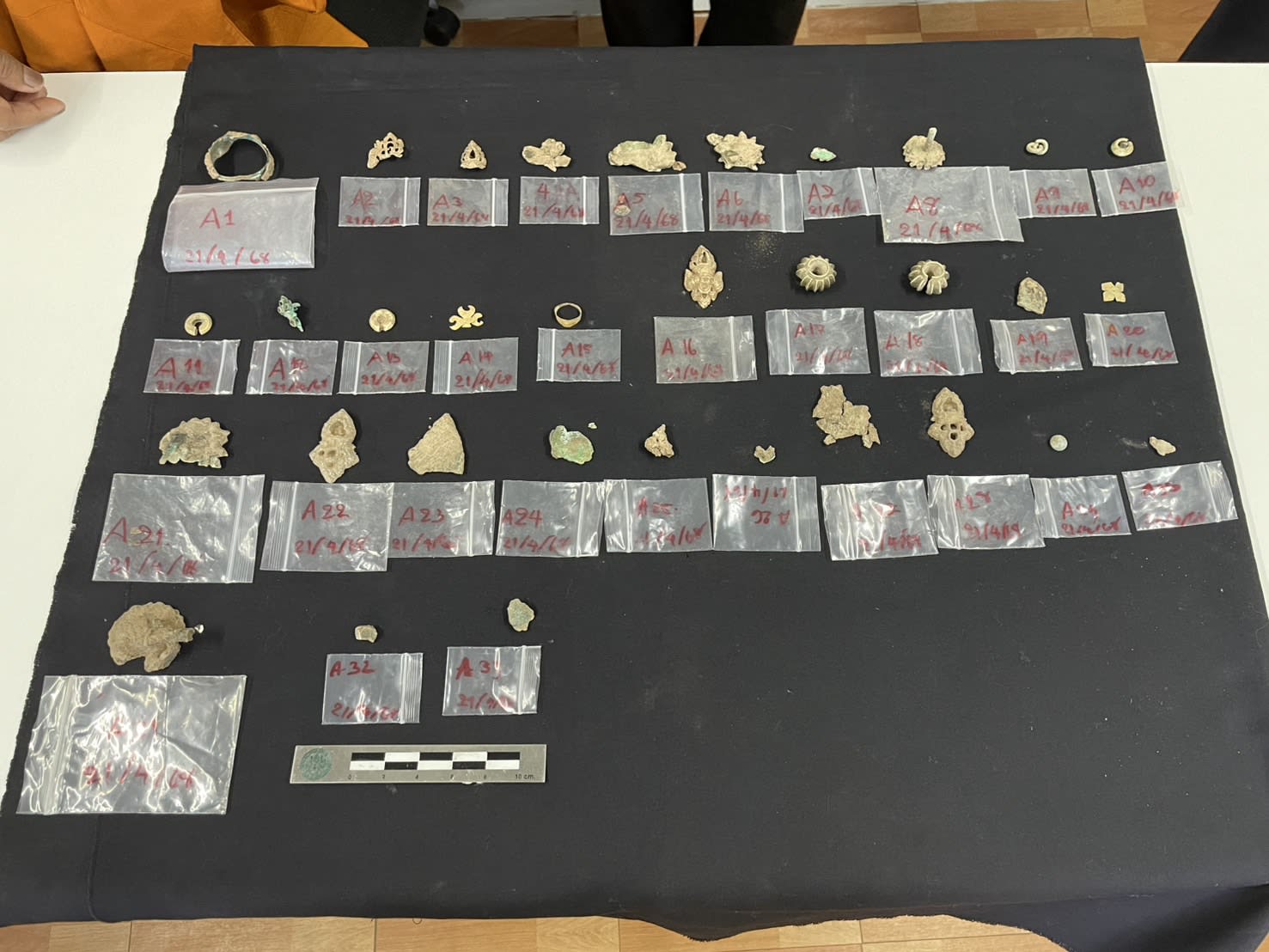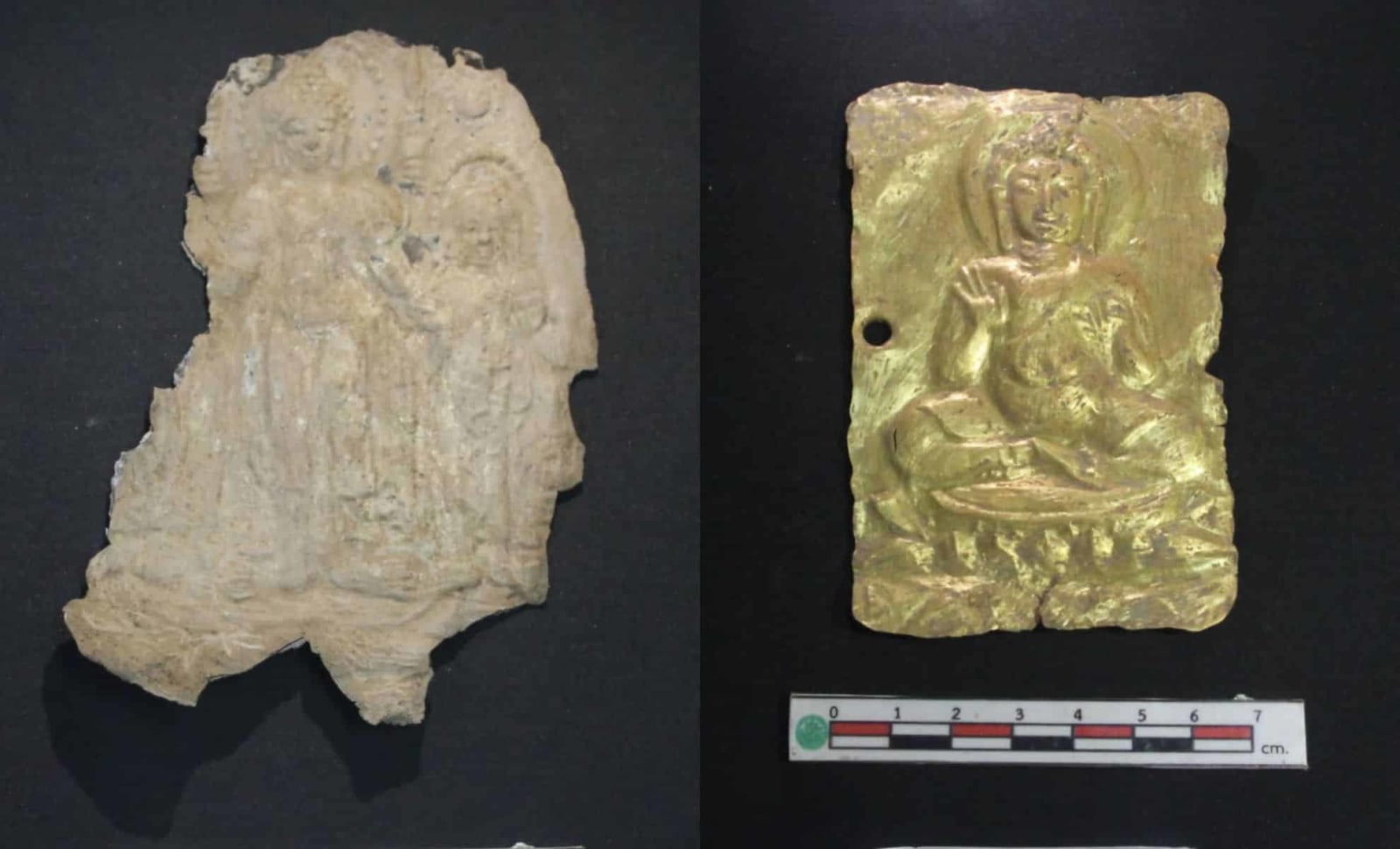Beneath a Buddha Statue: Crew Unearths 1,300-Year-Old Golden Hoard in New Zealand

Archaeologists in Thailand recently uncovered an astonishing collection of ancient gold, silver, and bronze artifacts concealed under a recumbent Buddha sculpture Tracing back roughly 1,300 years. These discoveries were outlined in a release from Thailand’s Fine Arts Department and are presently kept at the Phimai National Museum for additional examination.
A Concealed Treasure Under Thailand’s Largest Recumbent Buddha
According to Popular Mechanics , the excavation started when workers dug more than four feet beneath the large sandstone reclining Buddha statue— measuring 43 feet in length and deemed Thailand’s most senior — stumbled upon a ceramic vessel. Within it lay numerous antique adornments fashioned from gold , silver , and bronze . The artifacts incorporated gold rings, silver ear pendants, and bronze hoop earrings similar to those discovered at other Dvaravati locations.
This finding led to more exploration regarding the topic. statue , resulting in the discovery of three more important artifacts. A noteworthy finding was a square-shaped golden plate. approximately sizing up at three inches by five inches , featuring an intricately raised depiction of a seated Buddha in a teaching pose. This artwork, crafted through the repoussé technique, shows the Buddha with signature curly hair, a prominent halo, stretched earlobes, and flowing robes.

This Ancient Metal Craft Uncovers Clues About Forgotten Faiths
A second repoussé panel crafted from a lead-tin mixture features a standing Buddha inside an arch-shaped border, accompanied by two assistants. It’s believed that the attendant on the right might be depicting the Hindu deity Brahma; however, harm to the left figure has caused it to become indistinct.
Phanombutr Chantrachot The director-general of Thailand’s Fine Arts Department stated, "A tiny aperture at the upper right corner of the piece suggests it was probably suspended using a string. It might have served as decor or wearable art."
The third item found is a pile of metal sheets welded shut Using clay and cement. Although its precise imagery is unclear because of damage, this discovery was found just behind the recumbent figure. Buddha’s head —he suggests it was a intentional ceremonial offering.
Chantrachot noted, "The inscription carved behind the reclining Buddha's head suggests to specialists that this piece was likely an intentional ritual offering positioned precisely where it was discovered."

Preserving The Legacy
These archaeological treasures are now being safeguarded and organized by the Phimai National Museum , making sure they stay easily accessible for subsequent research and display. This finding brings fresh insights into the cultural and religious customs of the Dvaravati era, which lasted during this time. roughly from the 6th to 11th centuries and represents a formative era in the history of Thailand.
The artifacts reveal the sophisticated metalworking techniques and ritual customs that ancient artisans employed, highlighting the region’s importance as a crossroads of Buddhist and Hindu influences. This find enriches our understanding of the symbolic and artistic traditions that shaped Southeast Asia over a millennium ago.
Enjoyed this article? Subscribe to our free newsletter For captivating tales, special material, and up-to-date information.
To find more stories like this one, check out .
Post a Comment for "Beneath a Buddha Statue: Crew Unearths 1,300-Year-Old Golden Hoard in New Zealand"